12 Best Practices in Training and Development

Leveraging the best practices in training and development is essential in honing your teams into a high-performance workforce. Check out how our guide below can help you increase employee engagement, improve knowledge retention, and streamline your training processes.
1. Transforming traditional training with microlearning
Traditional training methods, like live training sessions or common eLearning courses, can be overwhelming for employees with hectic deadlines and schedules. You can improve your training approach by transforming your learning content into microlessons. It is done through a microlearning strategy that breaks down loads of training content into bite-sized modules. Focusing only on key elements or messages with this method is one of the best practices in training and development that prevents cognitive overload among learners. With the compact nature of microlearning courses, they can be completed in just a couple of minutes, unlike traditional courses that take hours or days to complete. Overall, a microlearning approach makes your training easier to understand, more engaging, and less time-consuming.
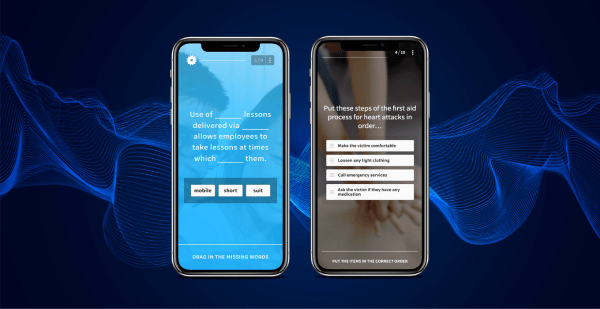
SC Training (formerly EdApp) is an award-winning learning management system that promotes microlearning to help you improve employee learning outcomes. It's free for up to 10 users. With this platform, you can readily deploy available microlearning courses from its free, editable course library. These courses can be tailored with your own expertise or standards specific to your company. You can also easily create your own microlessons without any technical knowledge or designing experience thanks to its user-friendly authoring tool with 80+ interactive templates. To get started, you can deploy corporate compliance training courses or internet marketing courses by SC Training (formerly EdApp) to train your teams with microlearning!
Sign Up for Free to apply microlearning strategy into your training programs with SC Training (formerly EdApp)!
2. Applying gamification to increase engagement
Another best practice in training and development is to ensure that the learners are fully engaged in their lessons. One way to do this is by combining effective microlearning with engaging gamification. It is the process of turning regular training modules into casual or competitive games. Some gamification examples include drag-and-drop, sequencing, matching, and many more. It’s an effective way to combat the lack of motivation and boredom associated with learning work-related information. When learning doesn’t feel like another mundane task, learners are more engaged and knowledge retention is increased. This training strategy is proven to result in 90% (or higher) completion rates compared to typical eLearning courses.
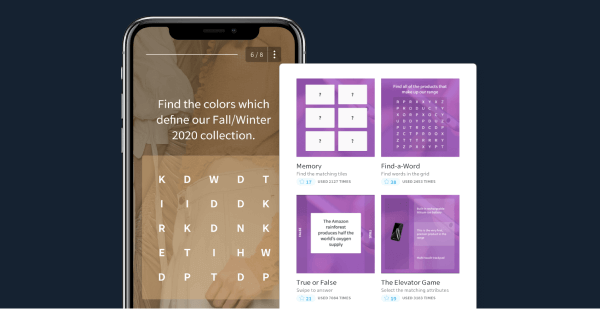
To help you easily gamify your training courses, SC Training (formerly EdApp) also provides gamification templates in its authoring tool which includes true or false, image/word match, letter jumble, and many more. This LMS also provides a scoring system and a gamification-based reward system through badges and banners that learners can receive whenever they complete a course or ace a lesson.
3. Incorporating spaced repetition to enhance knowledge retention
Spaced repetition is the strategy of repeating key learning concepts to enhance long-term memory retention. It’s a best practice in training and development to repeat key information such as product knowledge and workplace best practices. This way, information is reinforced among learners to combat the forgetting curve. These concepts are delivered in a revised format at regular intervals to boost learning outcomes.

SC Training (formerly EdApp) incorporates spaced repetition strategy through its system-automated quiz called Brain Boost (by request only). This feature automatically extracts questions from your lesson to create personalized quizzes for each learner to test which information they’ve retained. The more answers they get right, the less frequent they are tested on a particular lesson. Employees will be able to access their Brain Boost in SC Training (formerly EdApp)’s learner experience.
4. Administering quizzes to reinforce learning
Administering quizzes to check the level of knowledge and competence, knowledge gaps, and learning progress of your employees is another ideal strategy in training and development. Quiz results provide key insights that will allow you to adjust your training programs accordingly to meet the timely needs of your learners. After a training session or a corporate general meeting, you can deploy quizzes to your learners to reinforce vital information.
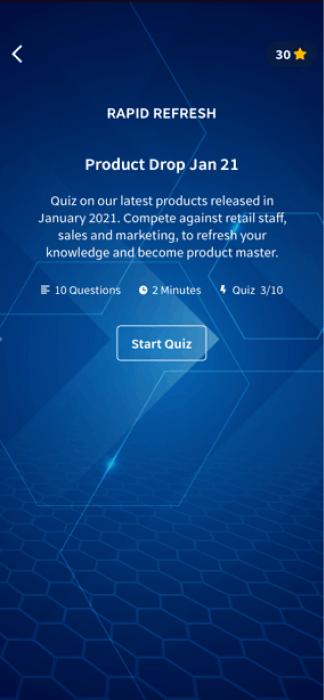
To build quizzes efficiently, you can use online quiz creators like SC Training (formerly EdApp)’s Rapid Refresh. This is a feature that allows users to create interactive quizzes even without any other existing content in SC Training (formerly EdApp). It provides an easy-to-complete template so you can effortlessly set up your questions. Quizzes can then be deployed for single or multiple sessions and delivered at regular intervals – whether daily or weekly. SC Training (formerly EdApp) can instantly generate granular reports when a quiz is completed so you can better understand the performance of learners or user groups.
5. Motivating learners through a friendly competition
Some employees thrive in friendly competitions which can be incorporated into your training programs through leaderboards. To rank on the board, employees can earn points on their online learning activities such as completing courses and passing assessments. This strategy recognizes outstanding learners and also motivates underperforming learners to improve their performance.
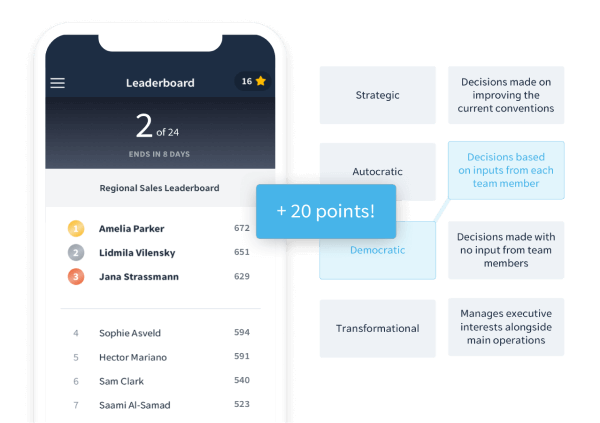
SC Training (formerly EdApp) enables you to leverage this with its Leaderboards feature (by request only) that gives learners the opportunity to gain points for the highest score in each lesson or Rapid Refresh quiz. For administrators, it provides a straightforward overview of the learning progress on an individual and group level. To further boost competence and encourage employees to achieve better learning results, instant recognition can be given to top-ranking individuals or teams with incentives, prizes, or awards.
6. Recognizing employee achievements
Another strategy to keep employees engaged and motivated is by recognizing employee achievements for their time, effort, and hard work in completing their online courses. This can be done through certificates, incentives, and badges. SC Training (formerly EdApp) makes this easy with its certificate management feature. With this tool, you can reward learners with course completion certificates that they can easily save and download. You can even customize certificates with your company name, badge, logo, and cover image.
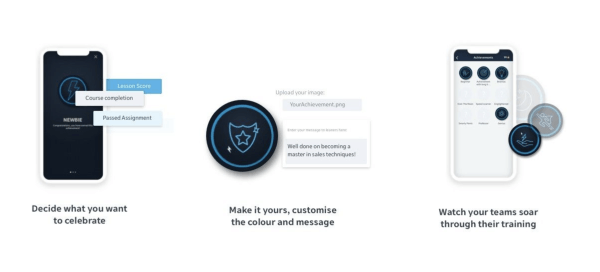
Aside from certificates, SC Training (formerly EdApp) allows you to congratulate, motivate, and inspire learners with banners and badges for every learning progress. You’re also given the option to export each learner’s Achievements to internally shout out top achievers and learner’s milestones. This creates intrinsic motivation for learners, as well as an internal buzz between employees, leading to higher engagement and better learning behaviors.
7. Boosting learning with visual elements
Learners are more likely to understand training concepts and embed information in their long-term memory when their visual thinking is stimulated through visual elements like pictures, graphics, and diagrams. This amplifies the importance of leveraging well-designed and visually informative learning content in improving comprehension and retention of the learners.

To help you easily incorporate visual learning strategies, SC Training (formerly EdApp) has a powerful course authoring tool. It is an instructional designing platform that enables users to easily create educational content using a simple drag-and-drop tool. It provides free stock photography and templates for activities, lessons, and courses in just one platform, which helps users easily design visually engaging content – even with little to no knowledge of or experience in graphic design. With well-designed and visually informative lessons, your learners are able to have a better grasp and retention of your training content.
8. Enabling peer learning to make training interactive
Peer learning gives your employees the opportunity to learn from mentors or colleagues through forums or discussions. It encourages employees to share each other’s learning, expertise, and best practices by discussing their coursework or gathering responses for different topics or situations.This makes learning content more relatable for the employees and improves the likelihood of knowledge retention not only for the learners but also for the individuals participating in the teaching.
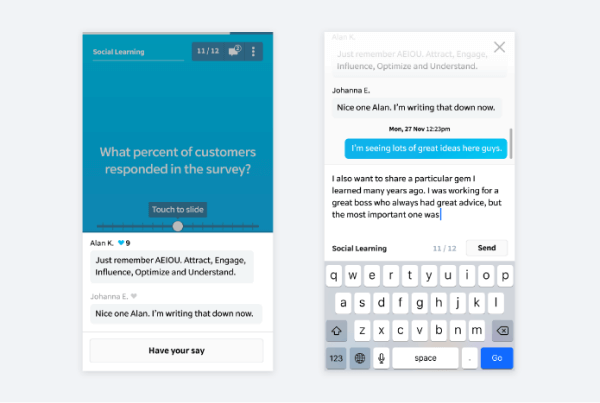
SC Training (formerly EdApp) promotes social learning through its Discussions and Assignment features that support instant coaching and mentoring. The Discussions feature is designed to provide a dynamic and interactive learning experience through in-lesson discussions. Coaches can even step in to provide insight into key responses. Meanwhile, the Assignments feature allows learners to submit responses that can be easily reviewed and graded. By fostering a collaborative environment on mobile learning, you’re able to create an interactive learning experience among teams and peers even without physical interaction.
9. Making learning convenient with mobile learning
For employees who don’t have immediate access to desktops or barely have enough time to spare for long training sessions, it’s important to make learning convenient. Mobile learning, also called mLearning, is one training approach that embeds smartphone technology into the learning process. It enables learners to access and complete their courses on any mobile device, anytime and anywhere. This gives employees more control of their virtual learning environment and flexibility in how they access their training materials – even while waiting for meals to get cooked at home or while sitting in traffic on the way to work.
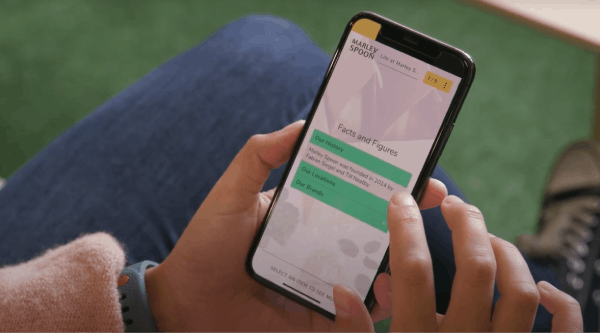
As a mobile learning solution SC Training (formerly EdApp) provides learners with a mobile learning app, allowing them to access their mandatory courses and quizzes, or further develop their knowledge and skills through their smartphones. You can even enable their custom notification feature to inform learners of new lessons or remind them of deadlines upon deploying courses or quizzes.
10. Streamlining training processes with an LMS
Applying the best practices in training and development can be challenging, especially considering various factors like the size of an organization, location of employees, and nature of work. By investing in tools like training LMS, you can streamline the process of administering and managing training programs, and equally ensure that the training approach is effective for the learners. It allows you to deliver training programs in a relevant and timely manner and for learners to keep their employee knowledge up-to-date with essential company information and necessary skill sets.

SC Training (formerly EdApp) is an all-in-one training LMS with a built-in administration suite that provides you with flexible, customizable, and adaptive tools for easier management. With this platform, creating and deploying courses and quizzes at scale is made possible with its course management tools such as intuitive authoring tools, course library, and engagement features.
Managing learners is also made easier with its user management system that allows you to see how many users are in your account, choose the level of user permissions, invite users, reset a user’s progress, monitor each user’s course progression, completions, and send notifications. It also gives you a comprehensive overview of the learning progress and outcomes of your training through its analytics dashboard and actionable reports. Overall, it serves as a catalytic training tool that helps you streamline processes in building and deploying onboarding training and employee training programs.
11. Adapt course evaluations
One of the most underrated training best practices is to use course evaluations. Course evaluations are a great way to assess your current training programs and identify key gaps. This will help improve the training courses themselves and overall create a much more meaningful learning experience for your team members.
Part of course evaluations and the best practices for training is gathering data directly from your learners. This can be in the form of summative or formative evaluations---the difference between the two is just the timing. Formative evaluations happen early in training while summative ones happen after. Which to use is dependent on the needs of your learners and the goals of the company.
12. Provide constructive criticism and feedback
Providing constructive, helpful, and practical criticism is a training best practice that can't be underestimated. Personalizing and directly providing criticism to your teams shows that you pay attention to their needs while still looking out for their professional growth and development. Best practices for training with regard to how to give constructive feedback include systematizing the process.
This simply means creating avenues for your learners to communicate with their trainers and managers like having surveys at the end of courses.
Author
Shera Bariuad
Shera is a workplace learning expert with a background in planning performance-driven solutions for various business industries. She’s dedicated to driving better learning and development outcomes by providing training strategies for training managers and curating lists of tools and courses for learners. Outside of work, she spends her time reading, illustrating, and designing.

